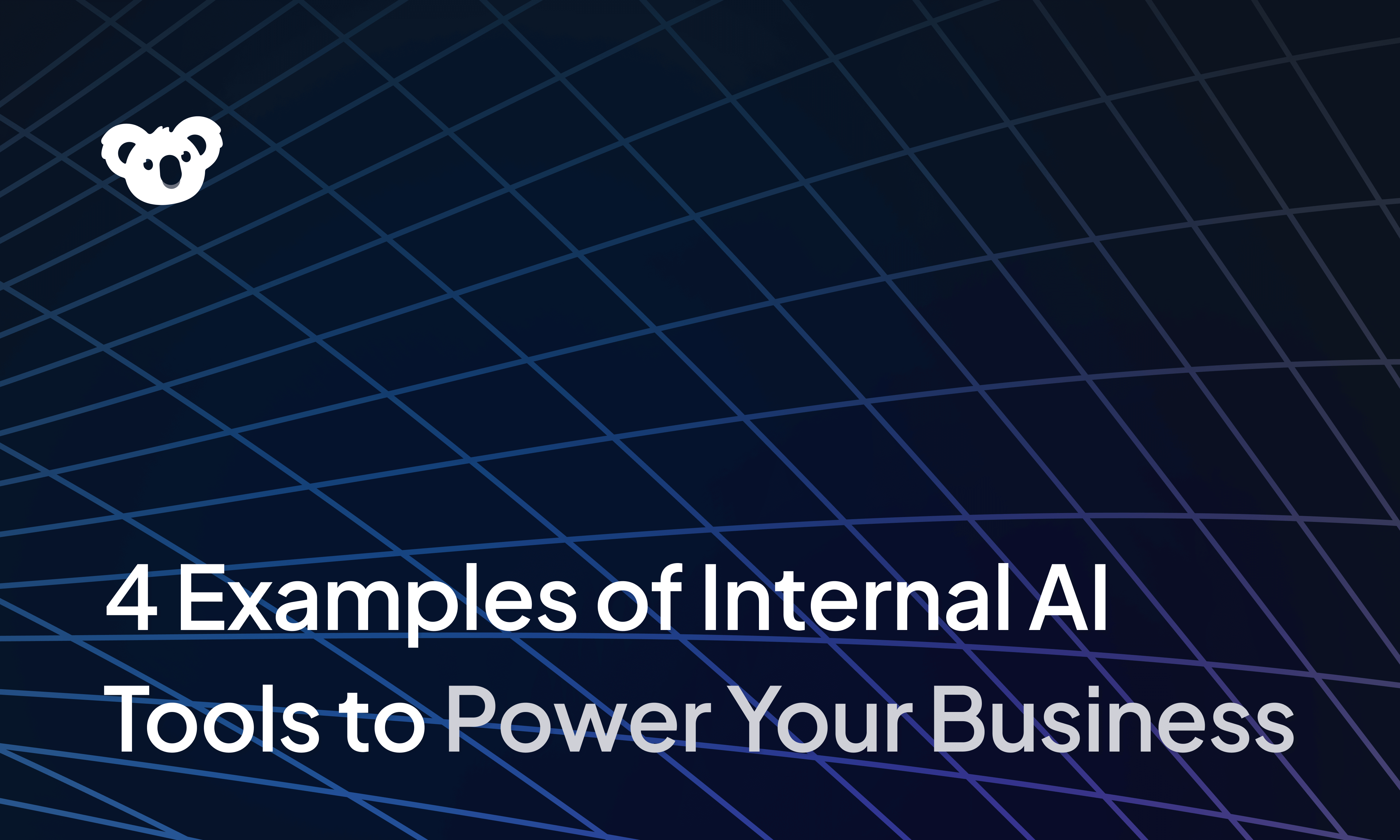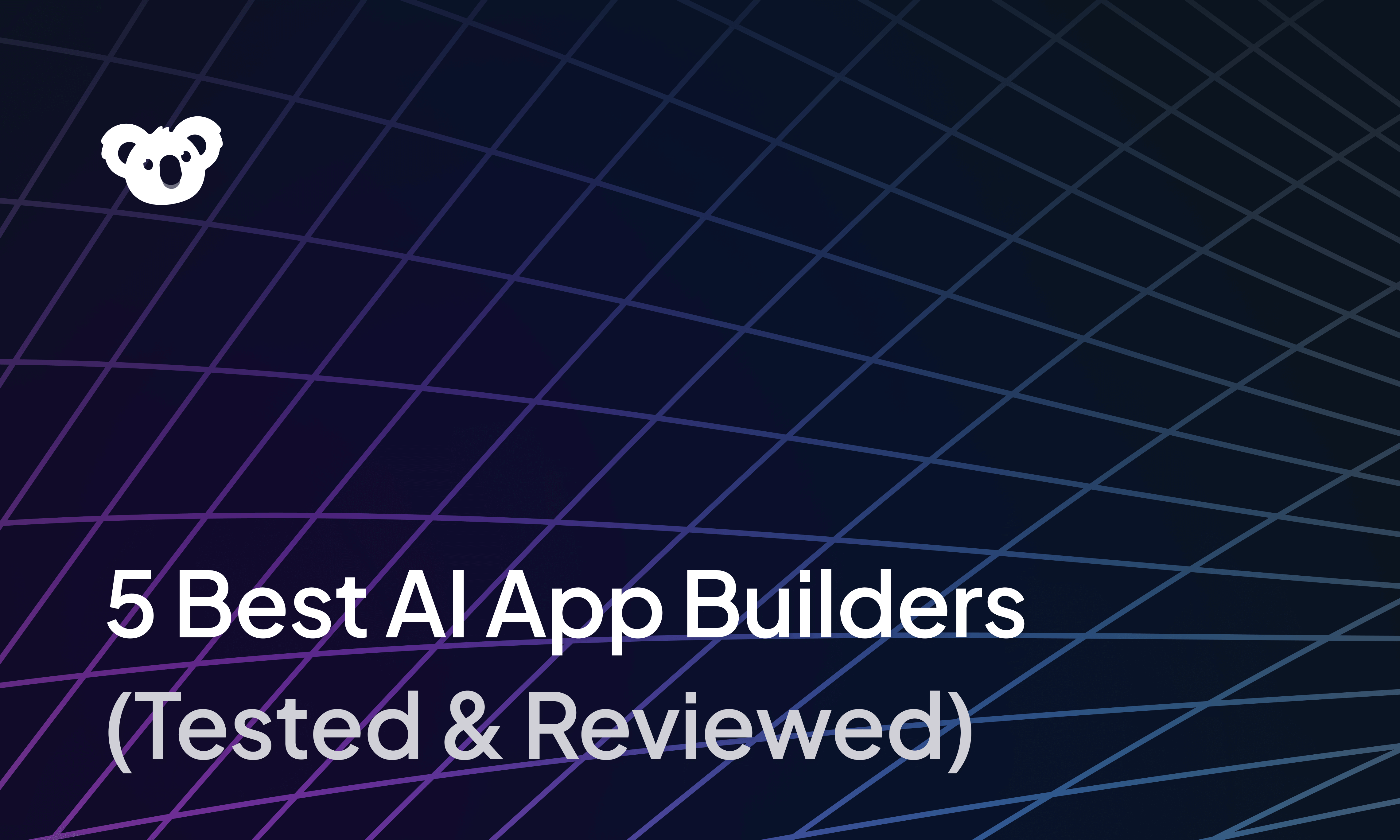


Mainframe integration is a strategy for connecting legacy systems to the modern infrastructure. It addresses common pain points like batch delays, green screens, and siloed data by making mainframe logic accessible through APIs and real-time workflows. Platforms like Superblocks act as a bridge for modernizing these core systems without the risk of a complete migration.
In this article, we’ll cover:
- What mainframe integration is and how it works
- Key features, patterns, and real-world use cases
- When to integrate, when to migrate, and how to decide
Let’s start by defining what mainframe integration is.
What is mainframe integration? The 30-second answer
Mainframe integration connects legacy systems, such as apps written in COBOL or using DB2 (IBM's mainframe database), to modern software using APIs, data streaming, or other middleware layers. It’s the fastest path to unlocking mainframe data and logic without a complete migration.
Key features of mainframe integration tools
Typical mainframe integration software and approaches share a few key features:
- Real-time data access via APIs: Expose mainframe data and functions on demand. REST, JSON, and gRPC interfaces let modern apps query or update records in real time.
- Batch-to-API conversion: Turn batch outputs and processes into API services. Instead of generating flat files nightly, you can trigger that same logic instantly with an API.
- Legacy function orchestration: Chain multiple mainframe actions like calling a COBOL program and updating a DB2 record behind a single API.
- Broad mainframe technology support: Good integration tools handle legacy formats used by older systems, so nothing gets lost when connecting to modern apps.
- Bi-directional data synchronization: Push and pull data between mainframes and cloud apps. That means not just reading legacy data, but updating it often via real-time streams, not just one-way feeds.
- Security and compliance: Features like encryption, API authentication, audit logs, and role-based access ensure that exposing a legacy system doesn’t open security holes.
If you're thinking about integration as part of a bigger modernization effort, take a look at our guide to enterprise architecture strategy.
How does mainframe integration work?
Mainframe integration connects legacy systems to modern apps using APIs, messaging, data streaming, or automation, depending on what the use case allows.
There’s no single approach. Architects choose from a few core patterns depending on the use case:
- API wrappers: Using an API gateway or integration platform to wrap mainframe transactions as RESTful services.
- Messaging brokers like IBM MQ or JMS: Sending and receiving messages from mainframes that middleware systems and microservices consume.
- ETL and data streaming: Using Change Data Capture tools to replicate DB2 or VSAM changes to a streaming platform like Apache Kafka.
- Screen scraping or RPA: When you can’t touch the legacy code, robots can mimic user input through terminal emulators or generate files in formats COBOL expects. It’s clunky, but sometimes the only option.
These approaches support a range of integration patterns:
- One-way data feeds: Replicates mainframe data to a cloud database to power dashboards, reporting, or analytics. The mainframe remains the system of record, and there’s no write-back risk.
- Request/response APIs: Allows a web or mobile app to call the mainframe in real-time. The mainframe handles the logic and returns the result.
- Bi-directional sync: Enables a modern app to both read from and write to the mainframe. These setups require strong error handling and security.
- Event-driven workflows: Triggers actions when events occur, like a new claim kicking off downstream processes, or a cloud app triggering a batch job. Messaging tools like MQ or Kafka keep everything decoupled.
Example of a mainframe integration workflow
To make these approaches more concrete, let’s walk through a simplified example of exposing a COBOL-based premium calculator to a modern web app using Superblocks:
- Identify a high-value legacy function: Start with a legacy routine that modern apps need. In this case, an insurance company wants to expose its mainframe-based policy premium calculator.
- Wrap it in an API (Using Superblocks): Use Superblocks to script the call to the COBOL routine and deploy a REST endpoint. This creates a new POST /calculatePremium API that calls the mainframe logic underneath.
- Implement security and translation: Secure the API with OAuth, API keys, or other auth methods we support. Handle encoding issues, such as converting EBCDIC or fixed-width records to JSON or XML, so the response can be parsed reliably.
- Connect the API to a modern app: Update the company’s web portal to call the new /calculatePremium API when a user requests a quote. Now, the mainframe logic powers the UI experience in real time.
- Test end-to-end: Validate input/output, error handling, and performance. Make sure the mainframe handles concurrent requests and the API returns useful messages when errors occur.
- Iterate and expand: After the first API goes live, build more. Claims lookups, policy updates, and renewals, each legacy function becomes a building block. You can later combine them into full user workflows.
Is mainframe integration better than full migration?
Mainframe integration is often a faster, less risky approach than full migration. You reuse what already works and make it accessible through APIs or middleware, but it keeps you tied to legacy systems.
Full migration is a complete rebuild. That might mean rewriting everything in a cloud-native stack or switching to off-the-shelf software. It sounds cleaner, but it’s a massive effort. Most teams underestimate how much complexity is buried in decades of COBOL. One industry study found that 90% of mainframe rewrite projects fail on the first attempt. They also take longer.
At a high level, here’s how mainframe integration compares to a full migration:
For a deeper look at how to architect systems, take a look at our guide.
The pros and cons of mainframe integration
If you're weighing integration versus a bigger overhaul, here are the pros and cons you should be aware of:
Pros (What actually works)
- You don’t have to reimplement decades of business rules. The components that pass audits keep doing their job.
- It’s the fastest way to “API-enable” a legacy system and meet demands like mobile apps, open banking, or customer self-service.
- Your mission-critical systems stay untouched. If the integration fails, the legacy process still works.
- You can tackle integration in phases.
Cons (Where it falls short)
- Still dependent on legacy uptime.
- Mainframes weren’t built for high-concurrency REST APIs.
- You continue to incur costs for hardware leases, software licenses, and specialized support staff.
- It doesn’t address inherent issues in legacy code.
Who should use mainframe integration (and who shouldn’t)?
Organizations with stable, business-critical legacy systems and no appetite for full migration should use mainframe integration. Those with greenfield apps or easy-to-replace systems should consider other modernization options.
Here’s a quick guide on who benefits the most from integrating vs. who might skip it:
Mainframe integration is great for:
- Insurance providers with 30+ year old claims systems: These platforms are packed with complex, business-critical logic. Rewriting them from scratch is risky and expensive.
- Large banks and financial institutions: Teams use integration to add digital channels like mobile apps or expose open banking APIs without touching the transactional backbone.
- Government agencies with legacy COBOL apps: Agencies choose integration to add online portals, data sharing with other systems, or analytics dashboards. This is because rewriting a legacy system often with scarce documentation is high risk.
- Healthcare, airlines, and other established enterprises: Integration makes modernization possible in regulated or uptime-critical environments where the cost of failure is huge.
In general, if you have a stable mainframe that is core to your business, and you need new features now, integration is likely the fastest option.
Skip mainframe integration if you:
- Have a greenfield app: If you’re building a brand-new application or service that isn’t tied to an existing mainframe, you don’t need integration.
- Can rewrite quickly in cloud-native stack: If your legacy app is small, self-contained, and well-understood, a rebuild or replatform may be cheaper and cleaner than building an integration bridge.
- Want complete platform control and a microservices-only approach: If tight coupling to a legacy platform doesn’t fit your architecture philosophy, integration might feel like a compromise. Some teams prefer to rebuild for long-term freedom.
- Have low usage or end-of-life legacy systems: If a legacy app is near end-of-life or low usage, wrapping it in APIs might be a wasted effort. In that case, either leave it alone or move quickly to replace it with something modern.
In short, if you don’t have a significant legacy dependency, or if that dependency can realistically be eliminated in the near term, then you might not need a mainframe integration layer at all.
Getting started with mainframe integration in 6 Steps
So, you’ve decided to pursue integration. How do you actually kick off such a project? Here’s a step-by-step roadmap:
- Audit your mainframe environment: Document what systems you have, how they’re used, and what interfaces already exist. Identify core apps, data sources, and how they communicate. This will help you spot integration opportunities and constraints early.
- Pick the right integration strategy: Match the method to the use case. Not every function needs a REST API. Some are better suited for messaging, Change Data Capture (CDC) pipelines, or even screen scraping.
- Choose your tooling: Prioritize tools that support your legacy stack and your target systems. That might be IBM’s z/OS Connect to expose mainframe assets, Superblocks to build UIs, or a mix of custom code and third-party middleware.
- Build a small pilot: Start with a focused use case that adds visible value. Avoid multi-step workflows or write-backs at this stage. Your goal is to prove that the integration works end-to-end before scaling up.
- Harden security and monitoring: You’re exposing a sensitive system, so add authentication, rate limiting, audit logging, and encryption from the start. Set up metrics and error logging for every integration touchpoint to catch issues early.
- Expand incrementally: Once the pilot works, build on it. Expose more functions, connect more apps, add write capabilities, or stream data to the cloud.
Mainframe integration best practices our clients wish they had known earlier
We’ve observed several best practices that consistently lead to better outcomes. They include:
- Use APIs instead of batch exports: If you can expose data or logic as an API, do it. APIs give you real-time access and better user experiences.
- Start small with a high-impact pilot: Pick one integration that’s visible, safe, and valuable. Prove it works. Then expand.
- Involve mainframe experts and business users early: Bring your veteran mainframe developers and business stakeholders who use the mainframe applications daily. Their insight into how systems work and fail is critical.
- Design for loose coupling and future flexibility: Use message queues or intermediate data stores where appropriate to buffer interactions. The less context the new side needs about the old system’s state, the better. This loose coupling prevents cascading failures and prepares you for a future replacement.
Common integration mistakes to avoid
Likewise, there are a few common pitfalls you’ll want to avoid:
- Rebuilding what works in legacy instead of reusing: If the mainframe has a stable, correct process, don’t code a new microservice to do the same thing unless there’s a compelling reason.
- Overlooking performance and capacity planning: Real-time APIs change traffic patterns. If you don’t account for that, you could degrade mainframe performance or even hit throughput limits.
- Not implementing proper security and error handling: Lock down every integration point. Use least privilege. Secure credentials. Handle every failure cleanly, especially when writing back to legacy systems.
Our verdict on mainframe integration
For most large enterprises that live on mainframes (banks, insurers, government agencies, etc.), mainframe integration is a first step in modernization. It lets you unlock legacy value without taking on the risk of a full rebuild.
With platforms like Superblocks, development teams can safely build these integration layers and internal tools faster than ever. You can create secure APIs, workflows, and UI components that connect to any database or system, including mainframes, without starting from scratch.
In our experience, this significantly speeds up builds, as much of the heavy lifting (connectivity, authentication, UI scaffolding) is handled by the platform. Dev teams can focus on business logic and leave the boilerplate to Superblocks.
Ready to modernize without migrating?
Mainframe integration doesn’t have to be slow, risky, or painful. With the right platform, it’s just another part of your stack. Superblocks gives you the tools to expose legacy logic as APIs, build modern frontends on top, and orchestrate workflows across old and new systems all without replatforming.
This is made possible by our diverse set of features:
- Multiple ways to build: Use Clark AI to generate apps that respect your existing permission structures and design systems, then refine them visually or in code as needed.
- Full code extensibility: Use JavaScript, SQL, and Python for fine-grained control over execution logic. Customize your UIs by bringing over your own React components.
- Exportable code: Own your applications fully. Superblocks lets you export all your apps as standard React apps so you can host and maintain them independently.
- Hybrid deployment: Deploy OPA within your VPC to keep all your data and code executions within your network. Keep managing your app, workflows, and permissions through Superblocks Cloud.
- Integrations with systems you rely on: Provides 60+ native integrations for databases, AI tools, cloud storage, and SaaS apps. Connect to your data sources where they are. No need to migrate data into Superblocks.
- Automatic deployments: Integrates directly with CI/CD tools like GitHub Actions, CircleCI, and Jenkins, so you can deploy updates just like any other codebase.
- Git-based source control: We support Git-based workflows, so you can manage your apps in your own version-controlled repository.
Try our visual builder and legacy-safe orchestration features today → Quickstart Guide.
Frequently Asked Questions
How do APIs help modernize legacy mainframe systems?
APIs help modernize legacy mainframe systems by letting developers expose core logic as REST endpoints, instead of relying on batch files or terminal screens.
What is the best platform for mainframe integration?
The best approach for mainframe integration combines several platforms. Teams often use z/OS Connect to expose APIs, IBM MQ or Kafka for messaging, and CDC tools like Qlik to move data out of mainframes.
Superblocks ties it all together. It connects to legacy systems and modern systems, so you can build frontends and workflows that span both.
Can Superblocks connect to DB2?
Yes, Superblocks can connect to DB2. It allows the use of custom connection URIs. If you have the necessary DB2 connection details (host, port, username, password, etc.), you can configure access to DB2 through the platform.
How does mainframe integration reduce compliance risk?
Mainframe integration reduces compliance risk by reusing core logic and controls that already meet compliance standards. You add security layers like role-based access, encryption, and audit logs to protect new interfaces.
What are common challenges of integrating with mainframes?
Common challenges of integrating with mainframes include limited throughput, unusual data formats (such as EBCDIC), and fragile interfaces. Integration also uncovers tribal knowledge gaps, like undocumented field behavior or interdependent batch jobs.
How long does a mainframe integration project take?
Small pilots (like exposing a read-only DB2 API) can take days or weeks. Larger projects, especially those with write-backs, custom UIs, or orchestration, can take a few months.
Can I trigger automations from legacy batch jobs?
Yes, you can trigger automations from legacy batch jobs. You can wrap batch jobs in APIs, schedule them from Superblocks, or trigger downstream processes (like sending data to a cloud app) once the job finishes
What’s the best tool for building modern UIs on top of mainframes?
Superblocks is the best tool for building modern UIs on top of mainframes. You can create secure, React-based frontends that connect to mainframe data through APIs or direct queries.
Stay tuned for updates
Get the latest Superblocks news and internal tooling market insights.
You've successfully signed up
Request early access
Step 1 of 2
Request early access
Step 2 of 2
You’ve been added to the waitlist!
Book a demo to skip the waitlist
Thank you for your interest!
A member of our team will be in touch soon to schedule a demo.
Table of Contents



.png)


